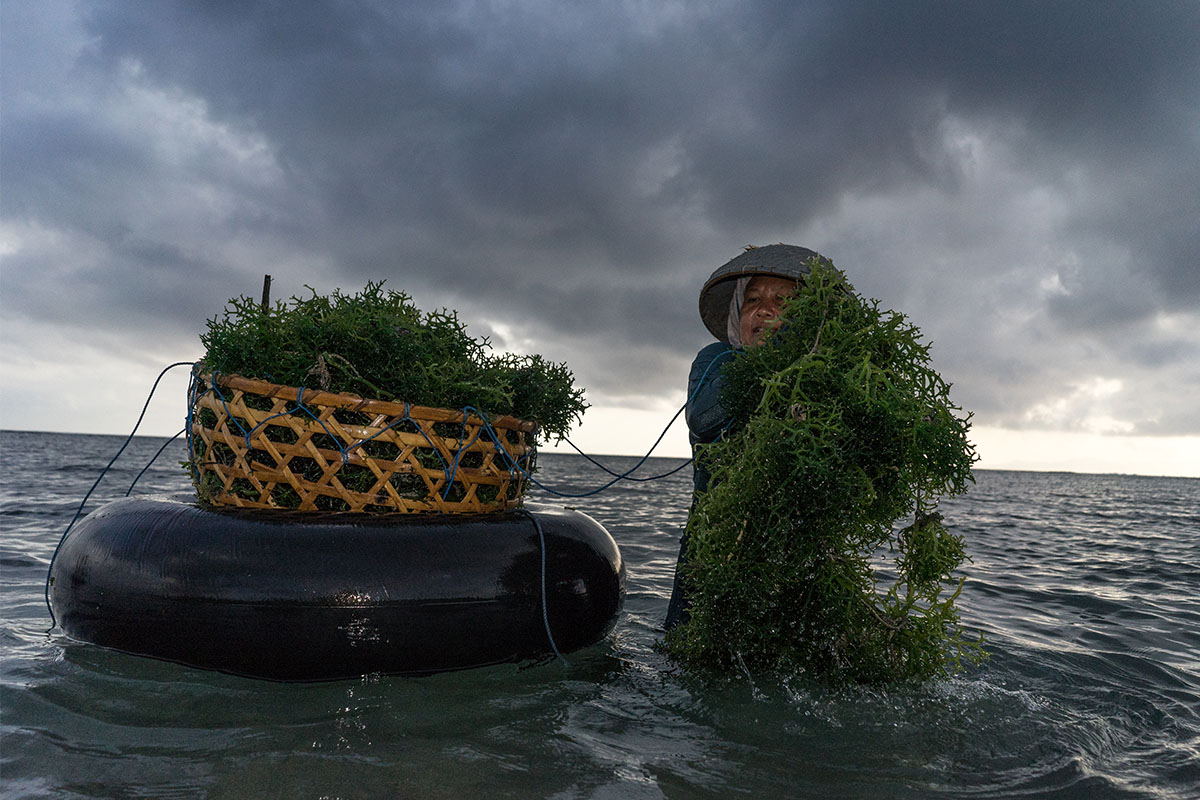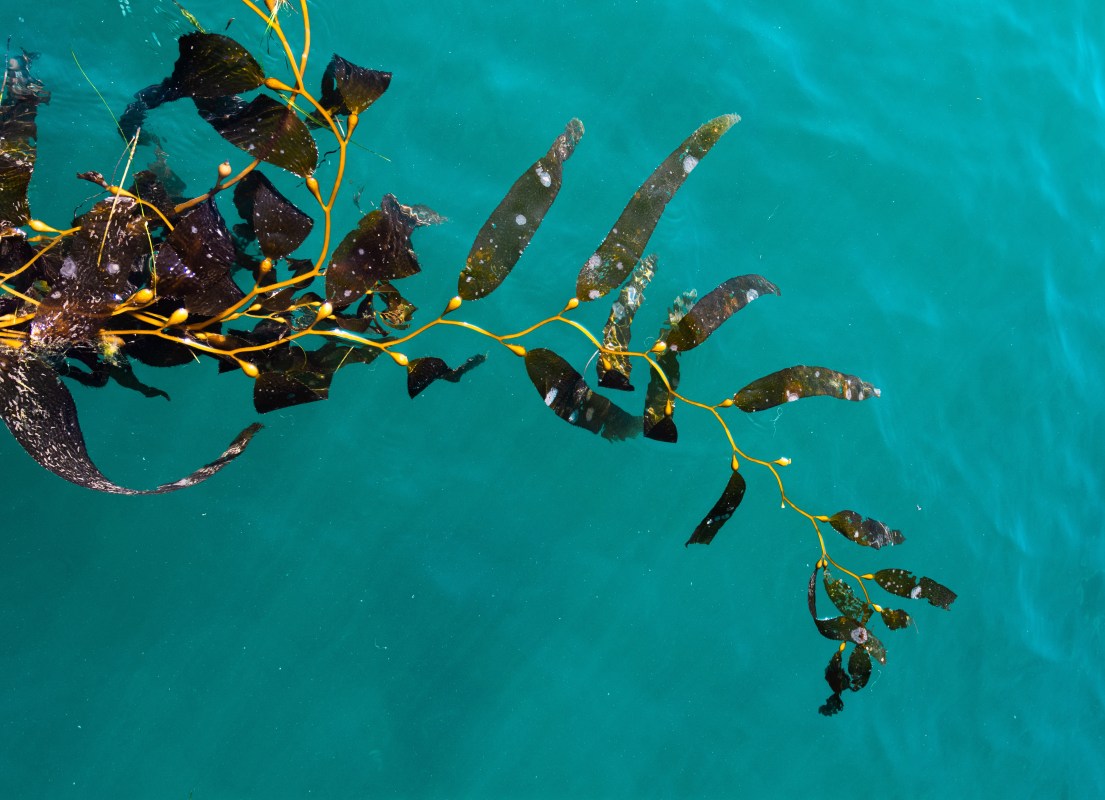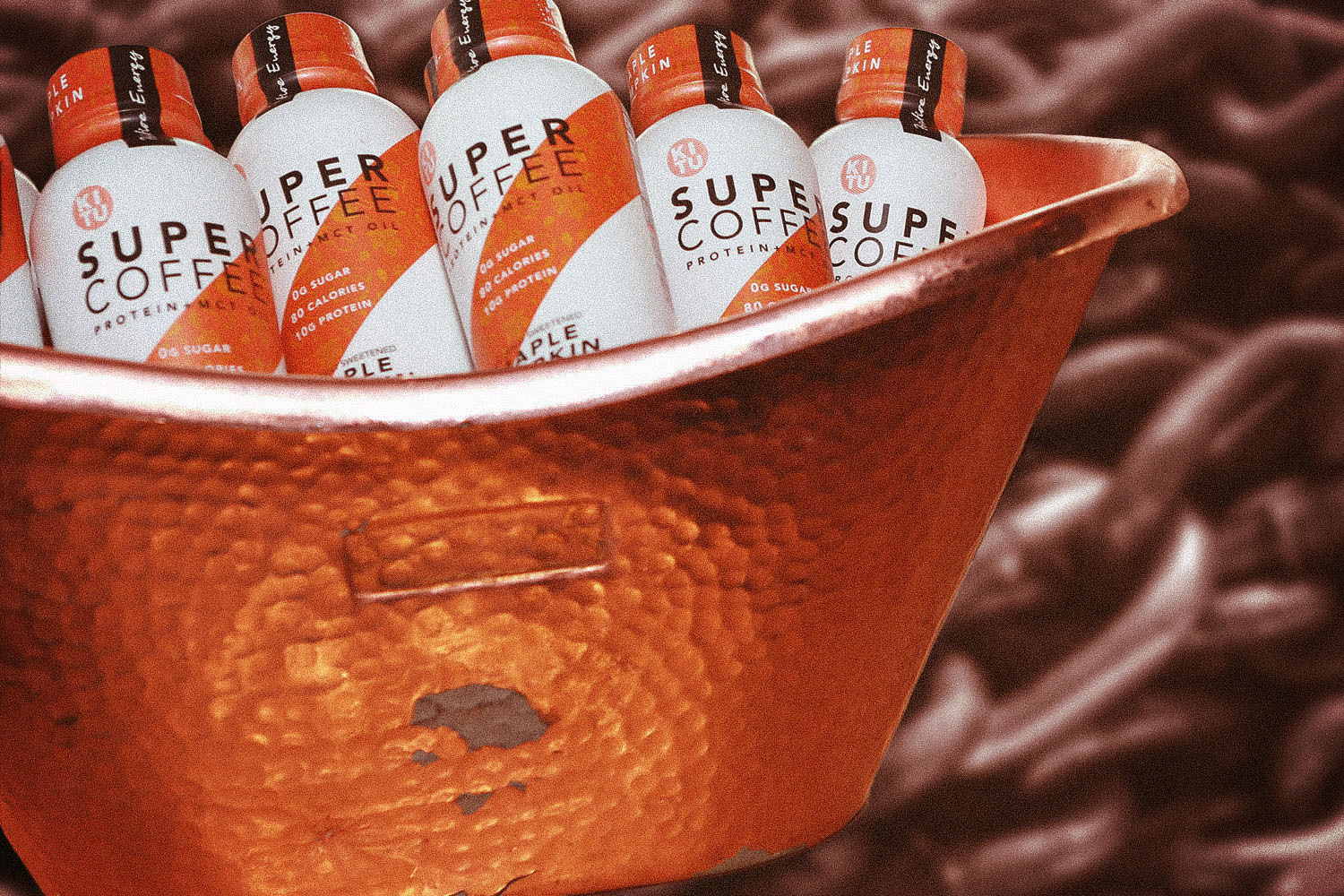According to a CDC report published earlier this year, just 10% of Americans regularly eat the recommended vegetable intake of at least two cups a day.
So it might seem like a fool’s errand, considering the country doesn’t even like eating greens from land, to urge people to eat greens from the sea. Especially when those “greens” are the slimy crap that wraps around your waist and toes during a beach-day swim. But sea vegetables, represented by the larger seaweed family, and its biggest subgroup, kelp, deserve your dietary consideration this year.
Packed with vitamins and minerals, seaweed can go 12 rounds with any of the other modish superfoods of the moment. For those who only associate it with a container of sushi, know that seaweed’s actively putting down roots in fine dining, in the snacking and seasoning spheres, and as a plant-based meat alternative.
And most importantly, your participation in the sea vegetable aquaculture complex won’t be reprimanded by some Netflix documentary in a year or two. On the contrary, seaweed farming is actually one of the most sustainable processes around, both vital to oceanic restoration and currently fueling the growth of dozens of climate startups.
The stats don’t lie: a sample size of red porphyra seaweed has more vitamin C than oranges, more iron than spinach, more calcium than milk and more vitamin A than carrots. A single cup of seaweed contains a day’s worth of your iodine needs (a mineral we too often neglect, which regulates thyroid function), is rich in fiber and long-chain omega-3 fatty acids, and according to a study in Nutrition Reviews, contains as much protein as certain cuts of beef.

The country with the longest life expectancy in the world, Japan (at 84.36 years, a full 5.57 years longer than the average American life), consumes kombu, or dried kelp, in 21% of all national meals. We won’t deign to draw a direct link there, but keep in mind, seaweed consumption is “believed to impart some of its antioxidant and antiproliferative activity in the prevention of cardiovascular disease and cancer.” The leading causes of American deaths last year? Heart disease and cancer.
Sea vegetables can’t erase an otherwise lousy diet, but finding a way to work them into meals or snacks will have its benefits — and could encourage other healthy choices.
The good news: the ingredient’s easier to come by than ever. Wakame (strips of dried seaweed), is accessible at most grocery stores, or easily purchased online, and can be combined with cucumbers, soy sauce and sesame seeds for a simple, reliable salad. Veggie home-chefs looking to cook without chicken stock can make kombu dashi stock in 20 minutes or less. (The endgame here is big-time umami.) There are also kelp noodles, seaweed salsa, all-purpose kelp seasoning (Bragg’s makes a good batch), powders for popping into smoothies, and likely the most popular option, roasted seaweed chips, or nori.
You could make your own at home (there are some excellent recipes online for whipping up Korean fried kelp chips), or go with a brand like gimMe, which made our list of the 25 healthiest snack brands. They offer packets of roasted seaweed sustainably harvested from South Korea’s Yellow Sea, dressed in sea salt, teriyaki, wasabi and avocado oil flavorings. Chips are delicious, obviously, but it won’t kill you to sub these in once in a while. It will do the exact opposite, in fact.
Comestible seaweed is even making a successful leap into the plant-based meat sector. Years back, researchers at Oregon State University patented a form of red marine algae called dulse which tastes like bacon when cooked. It has twice the nutritional value of kale, which doesn’t seem fair.
And last year, The New York Times raved about “veggie burgers from the sea,” aka the cultivated kelp patties from Portland, Maine-based Akua. Plant-based consumers (and their detractors) have started to question the many powders and isolates that combine to form their now customary grill order, but Akua’s ingredient list is straightforward: a heaping of kelp mixed with mushrooms, pea protein, quinoa, black beans and chickpea flour.
The process behind an Akua burger illustrates just how valuable this sort of aquaculture is for the planet. Consider: the “meat” of a kelp patty is produced without freshwater. That’s a claim that no normal burger can come anywhere close to making (the World Economic Forum estimates that a single hamburger requires over 500 gallons of water to produce). Even a Beyond Burger needs a bit of water, though overall, it requires 46% less energy to produce and package.
But an Akua burger doesn’t need much of anything. No chemicals, no fertilizers, no pesticides. It doesn’t rely on arable land or any form of marine life for food. It just grows on its own, and actually helps its surrounding environs in the process. Kelp can grow as much as three feet per day, all the while soaking up carbon dioxide that would otherwise acidify the ocean. We’re all familiar with the term “carbon neutral” these days. Well, seaweed farming is a carbon negative enterprise, and is currently being studied by the United Nations as an effective mitigation tactic in the fight against climate change.
You don’t have to eat specifically eat Akua’s burgers or jerky to support seaweed crops. Sustainability is the norm for the overwhelming majority of seaweed farms (there have been some instances where farmers cut down mangroves or removed eelgrass, but this is naturally disincentivized, as it discourages water quality and limits harvests). These farms are growing throughout the United States, specifically off the coasts of New England, the Pacific Northwest and Alaska; according to the NOAA, seaweed farming is “the fastest-growing aquaculture sector.”
Generally, when looking at potential climate solutions, there’s a huge catch. But that just isn’t the case here. Seaweed farms are efficient for farmers, allowing them to “vertically” farm the plant (which makes the most of a confined area). They soak up nitrogen and phosphorous, reducing acidification and improving life for everything from shellfish to sea birds to whales. Kelp beds promote biodiversity while alleviating the presence of heavy metals in coastal waters (this seaweed shouldn’t be eaten). It’s an over-exuberant weed, basically, but the rare sort that’s actually on our side.
And its exuberance is infectious. Macroalgae, of all things, is now one of the hottest words in startup incubators and accelerators. Money is pouring into companies that are currently purposing seaweed variations for pharmaceuticals, skincare products, single-use packaging alternatives, nutritious beverages and even for the construction of wind turbines and electric vehicles, which has got to be some kind of sustainability bingo.
If you’re an American considering giving a vegetable a chance sometime soon, please look to the sea. Eco-minded brands love to riff on “healthier you, healthier planet” themes. This is the rare time that actually rings true. Make sure your next snack time makes a difference.
The Charge will help you move better, think clearer and stay in the game longer. Subscribe to our wellness newsletter today.
























